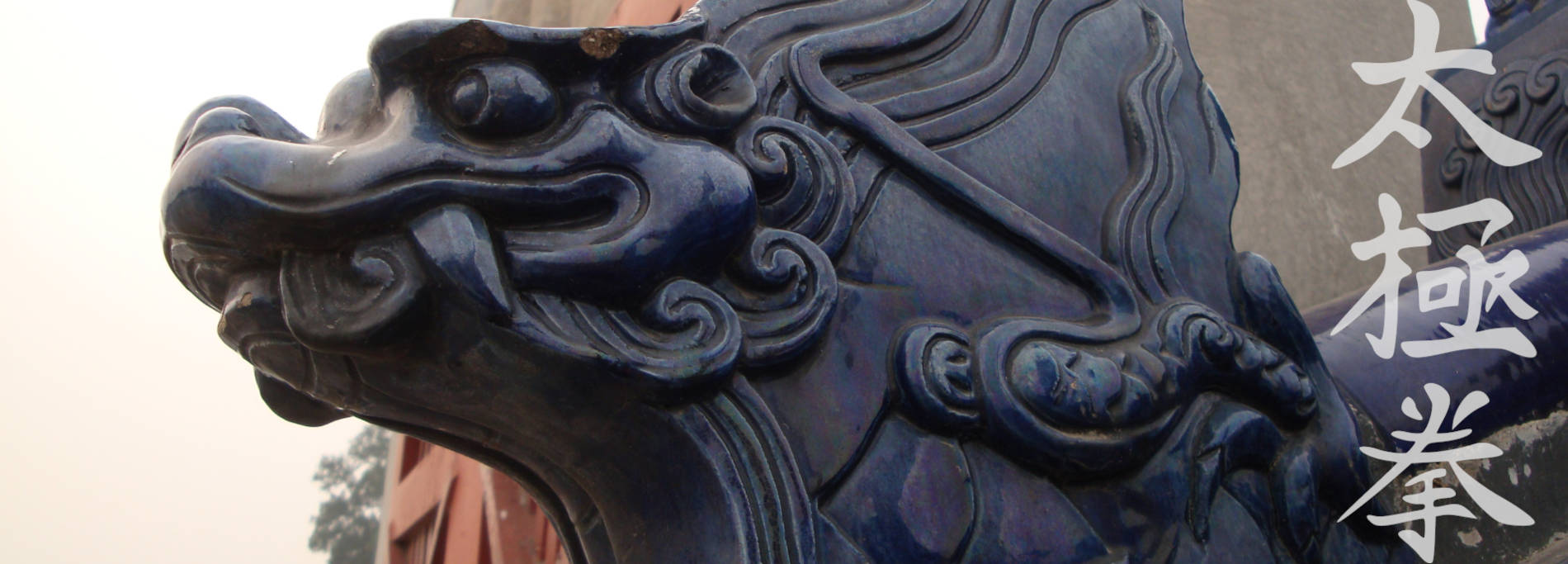There is more than meets the eye
Here I would like to share a couple of thoughts on methods, what we can find in a method and what can we see from the outside and what not. I will use one example of a concept most people who train Chen Taijiquan will be familiar with.
Leg structure and intentional work
One requirement for Chen Taijiquan is yuan dang 圆裆, rounding the crotch. The weight will thus drop in a different way than it would if we didn't heed the requirement. The weight has to be distributed in such a way that it does not constantly compress all joints. Rather there is a tensile action we want to develop which protects the joints. The connections run all the way down to the feet of course.
This should show in our practice. Even just looking at a foot‘s anatomy you might find out that it is noch such a great idea to bring the body‘s weight down in a linear way. In Chen Taijiquan you could basically forget the method of „silk reeling“ if you did. There are a couple of traditional phrases which describe this whole process, this image illustrates some of the needed requirements:

As usual I can only speak about the lineage I learned and how we work in our system. For us it is basically a beginner's mistake to put your weight in the middle of the foot. I often teach and explain this in the first class, knowing it might feel more comfortable and stable for beginners to just drop the weight down, but it leads to certain problems in the long run so it's better to immediately learn the correct method. After all, our body is not a pole you can run into the ground. Rather it has joints in between so to sink downwards and to develop root is unfortunately not as simple as that. To develop a "pile body" 桩身 we need a bit more conceptual knowledge to make it work.
If someone starts to work with the methods we convey, they might (or might not, depending on certain aspects...) feel slightly unbalanced for a short while. This is ok because after a couple of weeks there are many positive results, an enhanced understanding of stabilty, a sense of mobility within stillness, less pain in the joints etc. Part of the whole process is strucural, working on fascia, muscles and so on, some of the process has more to do with our intention of shaping our body internally.
Traditional methods and secrets
In the image above the second cue you find is the expression kai kua 开胯, meaning something like „open the hip joints“ (somewhat difficult to translate as kua is not a simple term). Both concepts help to shape the internal force and make it form a curved line. Without the bow structure there will be no expansive peng jin in the body. The above concepts, however, will not suffice to understand and practice the methodological requirements as they are not detailed enough. They point to the methods, but they are not the methods themselves. However, they are a good start. Rounding the crotch is thus a good prerequisite, and there are other internal connections 🈴 and intentions we will use to work through all parts of our legs. To know the external shapes of the legs will also help to start the process, but again, just knowing the external shapes is not the training process, yet.
Those who are not used to this kind of internal work might think a) it doesn't exist or b) that the external shape they see is all there is to it or c) that it is unimportant to know. But there is more than meets the eye which is why the art is so interesting. For example, if someone with no knowledge looked at the evolving structure he might think that we stand on the outside of the feet. Actually, I know that some people think we do... I have a fellow Chen Taiji teacher from another lineage who actually tells his students what he thinks we do and how everything we do is completely wrong of course 😀 While it is not 100% incorrect to say we stand more on the outside of the foot it is also not even 10% (in words ‚ten percent‘) correct. It is just the opinion of an outsider looking at a method he does not understand. Without knowledge of the intrinsic method, however, almost everything in the realm of „internal work“ (neigong) will be lost to an observer. It will remain a 'secret' - though for the insider of the respective art it is not. For an insider it is one of the core ingredients how to build gongfu.
How can I learn an invisible art then?
If you want to learn an art like this my simple advice would be to find a good system which teaches real methods, find a teacher who is and behaves like a human being, learn the methods of your lineage, observe well and practise diligently. Everything should be practical, there is no "belief" necessary for real body-mind-work. When you learned the methods you will know naturally where you are an expert and where you are a layman. Then strength and humility can come together as one.

